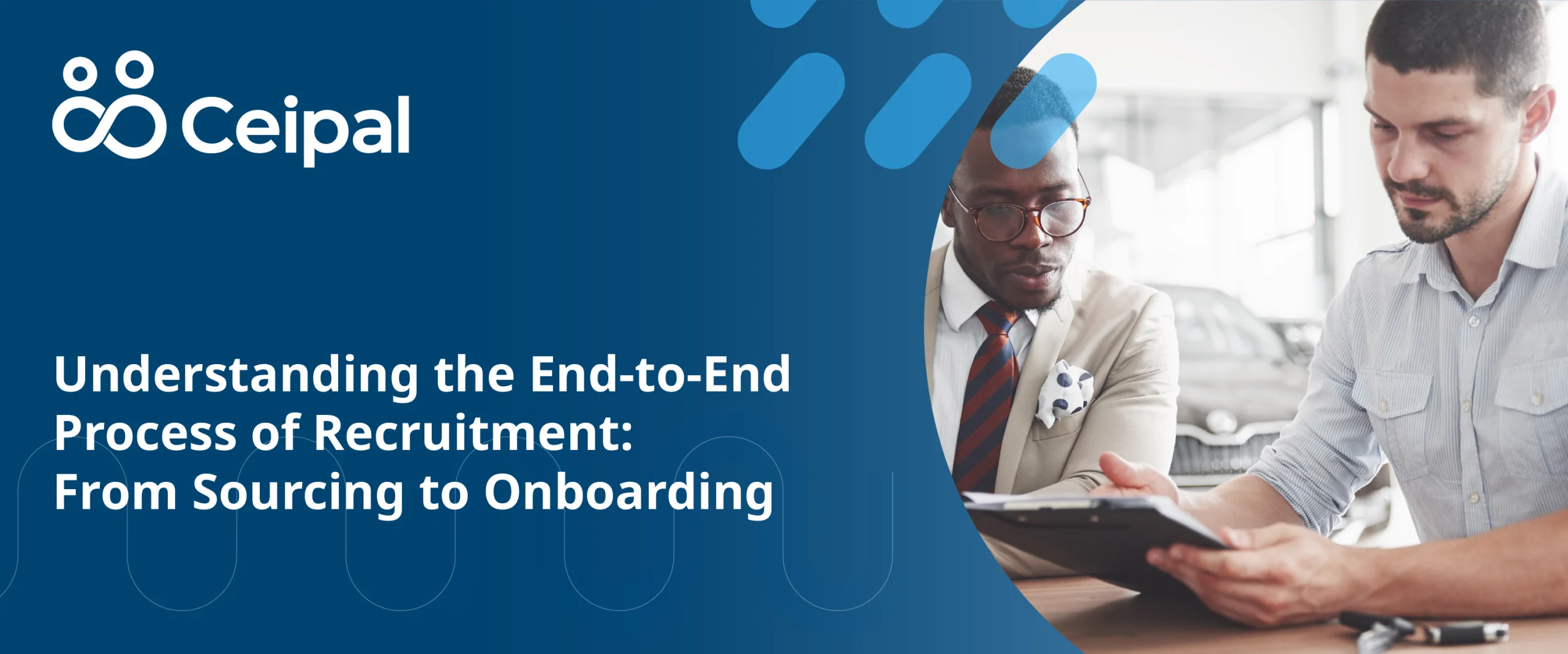Recruitment is often compared to matchmaking, where the goal is to find the perfect fit between a company and a prospective employee. Companies, both large and small, embark on the quest of hiring the perfect candidates who will seamlessly fit into their team puzzle. This isn’t just a process; it’s an art form involving multiple phases, each with its own challenges and nuances.
Exploring Each Phase of the End-to-End Recruitment Process
The recruitment process comprises a series of interconnected phases, each with its unique significance in identifying, attracting, and onboarding top talent. By understanding and optimizing each of these stages, organizations can enhance their ability to attract and retain the best candidates, ultimately contributing to their long-term success in the ever-competitive job market. Let’s delve into each phase of the end-to-end recruitment process, from initial planning and job posting to candidate evaluation, selection, and finally, the onboarding of new hires.
Sourcing Steps
Each step of the recruiting process is crucial to hiring the best talent possible. Take a look:
1. Source: Where the Hunt Begins
Recruitment begins with sourcing. This phase involves casting a wide net to identify potential candidates. Employers may use job boards, social media, employee referrals, or even recruitment agencies to find those elusive gems. But sourcing isn’t just about quantity; it’s about quality. Keywords, skills, and experience are the guiding stars that will help you to locate better quality candidates.
2. Screening: Narrowing the Focus
Once you’ve amassed a solid pool of applicants, it is time to start screening. Screening is the gatekeeper of the recruitment process. It’s where recruiters scrutinize resumes, conduct initial interviews, and determine if candidates meet the job requirements. It’s like the auditions for a blockbuster movie—only the best get through.
This phase demands a mix of keen observation and a knack for detail. Recruiters look beyond qualifications; they gauge the soft skills, cultural fit, and potential for growth. It’s all about finding the candidates that stand out from the crowd and moving forward from there.
3. Interview: The Chemistry Test
The interview phase is like a series of first dates. It is your first opportunity to assess a candidate’s personality and fit. It is also a balancing act—balancing the candidate’s expectations, assessing their skills, and ensuring they align with the company’s culture. This part of the process enables you dive deeper into the candidates’ experiences and aspirations.
In-person interviews, video calls, and assessment tests are common tools used in this phase. It’s not just about asking questions; it’s about creating an environment where candidates feel comfortable sharing their stories, which enables you to learn so much more about a person than a piece of paper. Recruiters now have the opportunity to analyze responses, read between the lines, and envision how candidates would fit into the grand scheme of the organization.
4. Selection: Choosing “The One”
Choosing the right candidate is akin to selecting a lead actor for a movie. After thorough assessments and deliberations, the one who best fits the role is chosen. It’s a meticulous process where recruiters weigh pros and cons, analyze potential contributions, and consult their own hiring intuition and experiences.
Selection involves making tough decisions. Recruiters engage in discussions, conduct reference checks, and sometimes even consult with team members. The goal is to ensure that the chosen candidate is the best fit for the organization. This decision is a pivotal point in the end-to-end process of recruitment.
5. Offer: Sealing the Deal
Once the chosen candidate accepts the offer, it’s time to seal the deal. This is when negotiations about salary, benefits, and other perks happen. It is the chance to finalize the terms of the contract before the big partnership.
6. Onboard: Roll Out the Welcome Mat
Now that the match is made, it’s time to welcome the new member into “the family.” Onboarding is the process of integrating the employee into the organization. Think of it as setting up a new member in your home—making them feel at home, introducing them to the family, and explaining the family traditions.
It’s a delicate dance of finding the perfect fit for your company while ensuring that the candidate finds their ideal professional home, but the journey doesn’t stop here. A candidate continues to learn and grow within the organization over time; however, understanding each phase of recruitment is crucial to building a strong foundation for a successful partnership between employee and employer.
Embracing the Recruitment Adventure
Recruitment is a journey filled with excitement, challenges, and opportunities. It’s about finding the right puzzle piece to complete the picture, and by understanding each phase of the end-to-end process, you’re better equipped to navigate this dynamic landscape. So, happy recruiting!
FAQs
1. What is the significance of cultural fit in the recruitment process?
Cultural fit is vital because it ensures that the new hire aligns with the company’s values, beliefs, and work culture, promoting a harmonious work environment.
2. Why is onboarding important?
Onboarding sets the tone for an employee’s tenure, making them feel welcome and prepared for their role, which can lead to higher job satisfaction and productivity.
3. How can I improve my candidate screening process?
To improve candidate screening, focus on defining clear job requirements, using standardized evaluation criteria, and conducting structured interviews.
4. What are the common mistakes to avoid during the recruitment process?
Common mistakes include rushing the process, neglecting cultural fit, not providing timely feedback to candidates, and failing to communicate effectively.
5. Is it essential for a candidate to have all the qualifications listed in the job posting?
While having all qualifications is ideal, some flexibility can be allowed if the candidate demonstrates a strong potential to learn and adapt to the role.









